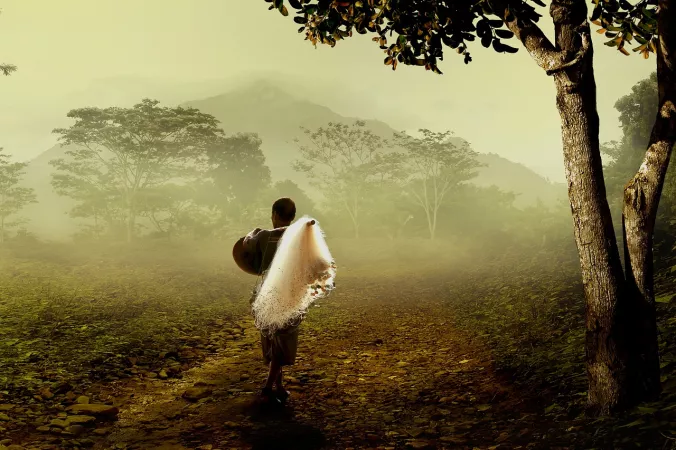
Molung Village
Mokokchung . Nagaland . India
Duration
2 to 4 Days
2 to 4 Days
Best time to visit
Apr-Aug
Apr-Aug
Theme
Hill Station, Adventure, Wildlife
Hill Station, Adventure, Wildlife
Molung Village Travel Guide
Molung Village is a quaint and picturesque destination located in the state of Nagaland, India. This village holds immense historical significance as it is home to the Ao Naga tribe, known for their vibrant culture and rich traditions. Surrounded by lush greenery and rolling hills, Molung Village offers a glimpse into the traditional Naga way of life, making it a truly unique travel destination.Top Attractions in Molung Village
- Visit the Ao Naga Heritage Village to explore traditional Naga huts and artifacts
- Attend the Moatsu Festival to witness vibrant cultural performances and rituals
- Trek to the Doyang River for stunning views and a peaceful retreat
Molung Village is Famous for
Its vibrant Ao Naga culture and the annual Moatsu Festival.Top Attractions in Molung Village
- Exploring the Ao Naga Heritage Village
- Attending the colorful Moatsu Festival
- Trekking to the serene Doyang River
What's Great about Travelling to Molung Village?
- Experience the authentic Naga culture
- Escape the hustle and bustle of city life
- Connect with nature and enjoy peaceful surroundings
What's Not So Great about Travelling to Molung Village?
- Limited accommodation options
- Basic amenities may be lacking
- Remote location with limited connectivity
Travel Tips for Molung Village
- Obtain Inner Line Permit to visit Nagaland
- Prefer hiring a local guide for better understanding of the culture
- Respect local customs and traditions
Important Molung Village trip information
- Ideal Duration: 2-3 days to explore the village and nearby attractions
- Best Time to Visit: The Moatsu Festival in May for a cultural extravaganza
- Nearby Airports and Railway Stations: The nearest airport is in Dimapur, and the closest railway station is in Furkating
FAQ's on Molung Village
Q1: What is the best time to visit Molung Village?
The best time to visit Molung Village is during the months of October to March when the weather is cooler and more pleasant. This period is ideal for outdoor activities and exploring the natural beauty of the village. Additionally, Molung Village hosts various cultural festivals and events during this time, providing a unique opportunity to experience the local traditions and customs.
Q2: Do I need a visa to travel to Molung Village?
Travelers to Molung Village typically require a tourist visa, which can be obtained upon arrival or through the e-visa system. However, it is advisable to check the specific visa requirements based on your nationality before traveling. Some countries may have visa exemptions or special considerations for visiting Molung Village.
Q3: What are the must-visit attractions in Molung Village?
Molung Village boasts several must-visit attractions, including the picturesque Molung Lake, known for its serene surroundings and bird-watching opportunities. The Naga Heritage Village offers insights into the rich cultural heritage of the region, with traditional huts and artifacts on display. Don't miss the vibrant local markets where you can shop for unique handicrafts and traditional Naga attire.
Q4: Is Molung Village a safe place to travel?
Molung Village is generally considered safe for travelers. However, it is advisable to exercise caution, especially when exploring remote areas or trekking in the surrounding hills. It is recommended to respect local customs and traditions to ensure a safe and enjoyable travel experience.
Q5: What is the local currency in Molung Village and can I use credit cards?
The local currency in Molung Village is the Indian Rupee (INR). While credit cards may not be widely accepted in the village, there are ATMs available in nearby towns where you can withdraw cash. It is advisable to carry sufficient cash for your expenses in Molung Village.
Q6: What is the local cuisine like in Molung Village?
The local cuisine in Molung Village is a delightful blend of Naga flavors and traditional dishes. Sample dishes like smoked pork with bamboo shoot, akhuni (fermented soybean) chutney, and rice beer for an authentic culinary experience. Vegetarian options are also available, with dishes made from locally sourced ingredients like organic vegetables and herbs.
Q7: What transportation options are available in Molung Village?
Transportation options in Molung Village include local buses, shared taxis, and private car rentals. Public transport may be limited, so hiring a taxi or renting a car is recommended for exploring the village and its surroundings. It is advisable to arrange transportation in advance, especially if you plan to visit remote areas.
Q8: Are there any cultural norms or etiquette I should be aware of when visiting Molung Village?
When visiting Molung Village, it is important to respect the local customs and traditions of the Naga people. Dress modestly, especially when visiting religious sites or attending cultural events. Seek permission before taking photographs of individuals, and avoid discussing sensitive topics like politics or religion. Greeting locals with a smile and a simple "hello" in the local language can go a long way in fostering positive interactions.
Q9: I am a travel agent. How can I buy travel leads of Molung Village?
Register yourself as a travel agent at agents.tripclap.com and then you can buy travel leads to Molung Village once your account is approved. For more details contact our support team at +91-8069186564 or support@tripclap.com
